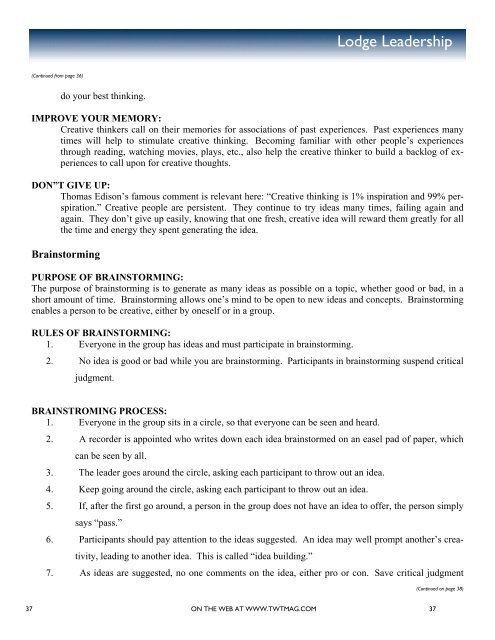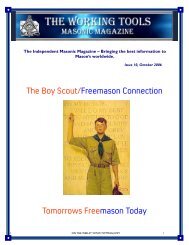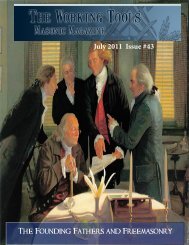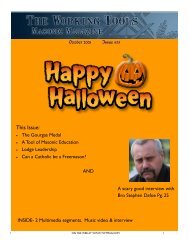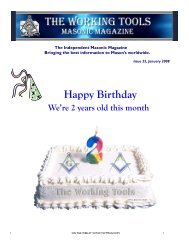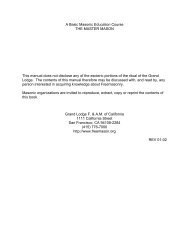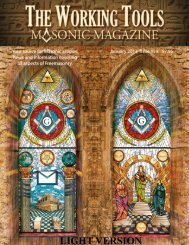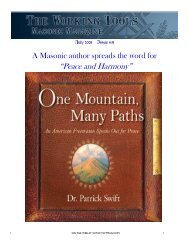Lodge Leadership Tools - Hawthorne-Fortitude Masonic Lodge No ...
Lodge Leadership Tools - Hawthorne-Fortitude Masonic Lodge No ...
Lodge Leadership Tools - Hawthorne-Fortitude Masonic Lodge No ...
Create successful ePaper yourself
Turn your PDF publications into a flip-book with our unique Google optimized e-Paper software.
<strong>Lodge</strong> <strong>Leadership</strong>(Continued from page 36)do your best thinking.IMPROVE YOUR MEMORY:Creative thinkers call on their memories for associations of past experiences. Past experiences manytimes will help to stimulate creative thinking. Becoming familiar with other people’s experiencesthrough reading, watching movies, plays, etc., also help the creative thinker to build a backlog of experiencesto call upon for creative thoughts.DON”T GIVE UP:Thomas Edison’s famous comment is relevant here: “Creative thinking is 1% inspiration and 99% perspiration.”Creative people are persistent. They continue to try ideas many times, failing again andagain. They don’t give up easily, knowing that one fresh, creative idea will reward them greatly for allthe time and energy they spent generating the idea.BrainstormingPURPOSE OF BRAINSTORMING:The purpose of brainstorming is to generate as many ideas as possible on a topic, whether good or bad, in ashort amount of time. Brainstorming allows one’s mind to be open to new ideas and concepts. Brainstormingenables a person to be creative, either by oneself or in a group.RULES OF BRAINSTORMING:1. Everyone in the group has ideas and must participate in brainstorming.2. <strong>No</strong> idea is good or bad while you are brainstorming. Participants in brainstorming suspend criticaljudgment.BRAINSTROMING PROCESS:1. Everyone in the group sits in a circle, so that everyone can be seen and heard.2. A recorder is appointed who writes down each idea brainstormed on an easel pad of paper, whichcan be seen by all.3. The leader goes around the circle, asking each participant to throw out an idea.4. Keep going around the circle, asking each participant to throw out an idea.5. If, after the first go around, a person in the group does not have an idea to offer, the person simplysays “pass.”6. Participants should pay attention to the ideas suggested. An idea may well prompt another’s creativity,leading to another idea. This is called “idea building.”7. As ideas are suggested, no one comments on the idea, either pro or con. Save critical judgment(Continued on page 38)37 ON THE WEB AT WWW.TWTMAG.COM 37


